1.Introduction
With the progress of science and technology and the improvement of viewers' needs, the art forms in the new media era began to be updated, and the narrative methods of art works were also adjusted. As a form of artistic expression, "immersion" plays a unique and profound role in the new media image art works. Besides giving viewers a perceptual immersion, the deep purpose of "immersion" is to build emotional feelings through perception, so as to continue the work in behavior. As a medium of communication between works and viewers, traditional narratology has been unable to meet the higher needs of the current users after completing the basic narrative tasks. Its unilateral form of outputting views to users has also been questioned by current social needs. Therefore, the interactive narrative mode of "letting viewers participate in the works" has become a development trend. Different from the traditional narrative mode, interactive narrative makes the artists's thinking and creation no longer isolated, but collective emotional exchange that can collide with the viewer's viewpoints. Therefore, this paper attempts to further analyze the practice of how emotion drives consciousness from the "immersion" form of expression by exploring the impact of interactive narrative on the emotional expression of new media image art works. The article will focus on three parts. First, it will give a theoretical overview of interactive narrative, then it will build the internal structure and logic of the article. It will discuss three aspects of interactive narrative, emotional expression and "immersion". The last part will study the emotional expression of the work and the emotional drive for consciousness from the specific case of the new media installation works of art. The author hopes to provide some thoughts for the future development direction of new media art through this article. The article believes that the use of interactive narrative method can not only more fully convey the information of artistic works, but also communicate with viewers in depth from the aspect of emotional communication, which better meets the development needs of new media image art. In the process of the development of new media art, design practitioners constantly try new forms, combine new fields and integrate multiple disciplines to further explore the possibility of design.
2.The Narrative Structure of New Media Image Art
2.1.Narrative Theory
The complete narrative link requires the joint participation of the narrator and the receiver. The narrator conveys the information to the receiver through the narrative medium, and the receiver then converts the information into individual cognition according to his own perception. The narrative process also includes narrative plot, narrative way, narrative space and other elements. According to Brooks's theory, "plot is regarded as the development mode and intention of narration, and is the necessary factor to form the story and give it the direction of development. With the guidance of plot, narration will produce emotional echo through the dynamic mechanism of memory and desire" [1]. In new media works of art, the emotional echo generated by narration is the bridge connecting the work with the viewer. The narrative way affects the communication mode between the narrator and the receiver, determines whether the communication process is one-way or two-way, and also determines whether the new media works of art can interact with the viewer. The narrative space is a virtual situation for the whole narrative process. Zohren once proposed that "the comprehensive experience formed by the reader's understanding when reading the text and the viewer's personal memory is the space that the reader sees and perceives" in front of "the fictional world" [2] .Narrative space will provide new media works of art with multi-dimensional immersion besides physical space. Narration exists objectively in the new media image works of art, and the components of narration will affect the external understanding of the new media image works of art.
2.2.Interactive Narrative Structure
The interaction in interactive narration includes reading, seeing and hearing, experience and participation from the perspective of interaction behavior. Interaction makes the way of information transmission no longer restricted, emphasizes the common function structure, and defines the communication between two or more individuals. In narration, the narrator creates some basic settings and situations for the receivers, and the receivers have more freedom to create independent story branches in the story world according to their current feelings. Interactive narration hides the deep intention of the work in the structure of the work and is not directly seen by the receiver. These intentions will gradually appear when the narrator and the receiver have interactive communication.
The existing forms of human-computer interaction, interpersonal interaction and media interaction continue to broaden the way for the integration of science and other disciplines. They also have corresponding performance in new media imaging works of art. Human-computer interaction, as a basic interactive presentation, provides a direct communication between the viewer and the work. The work begins to listen to the viewer's feedback and gradually responds to the viewer's behavior. In addition, interpersonal interaction is also more common in new media image works of art. Interpersonal interaction shows more changes in multiple roles between the narrator and the viewer. The interaction between the viewer and the viewer, and between the viewer and the work together constitute the whole of interpersonal interaction. With the continuous development of media interaction, the narrative text is no longer limited to one medium, but a multi-form and multi-media presentation. Interactive narrative replaces the narrator's "individual" voice with the "public voice" of the viewer group. Interactive narrative not only breaks down the barrier between story telling and information reception, but also deepens the significance of the work through the interaction between people and people [3].
3.Interactive Narration and Construction of Inherent Logic of "Immersive" Emotional Expression
In the narrative process of new media art works, besides the information that words and pictures can convey directly, the deep thoughts of some works need to be expressed through emotional communication with the audience. The deeper the communication, the more emotional connection is needed. Emotion can tell the subtle feelings that cannot be written in words, and can also quickly make the works closer to the viewers and resonate. However, the focus of emotional expression is different, and each person's feelings for emotion will also be different due to personal experience and personal values. It is precisely because of this difference in emotional feelings that the work is constantly given new meaning in the two-way communication between the narrator and the viewer. The deep interaction extending from the emotional expression is what this paper is going to discuss. Therefore, in this part, the author will analyze the influence of emotional expression on new media works of art under interactive narration by clarifying the internal logic of interactive narration and "immersion" emotional expression.
3.1.Interactive Narrative Relationship
Herman once put forward that "narrating is not the inherent quality of a text, it is the reader who interprets the text as narration through experience, and thus reports the text narration as a text symbol" [4]. In the traditional narratology, the narrative experience is formed by the image of the narrative content in the viewer's mind. To a certain extent, it is not a complete narrative experience. However, under the interactive narrative relationship, the existence of interactivity changes the narrative mode from the text structure to the experience structure, and feeds back the experience of the viewers in the narrative process to the narrator and the story itself in time, giving viewers the opportunity to change the narrative behavior [5]. The interactive narrative based on experience regards the viewer's actions and thoughts as the key to the development of the work's content.
Under the interactive narrative relationship, the identities of the narrator and the receiver have also changed. In the interactive narration, the roles of the narrator and the receiver are not fixed. The audience identity of the receiver can be changed into the participant or even the creator, and its behavior can be changed from "passive acceptance" to "active participation", presenting a state of "co-creation" with the work. Narrative can fully mobilize viewers' perception and thinking in the artistic works, and make the works turn from the artist's personal self-expression to the public's concern and communication. For works of art, interaction not only makes the form of the work innovated, but also gains the deep thinking and spiritual value extended after communicating with the viewers.
3.2.Emotional Expression of Driving Consciousness
Art, narration and emotion are shown as three connecting points on a development line under the logical transformation. Art is essentially a logical transformation form of emotion, and emotion is a psychological factor accompanying artistic creation and acceptance. Under the stimulation of external things, it can stimulate the subjective initiative of the viewer and arouse the viewer's memories and associations. The cognition formed by some emotions may even cause the viewer to have an illusion [6]. New media image works emphasize the combination of science and technology and art, so emotional expression is always seen as a bridge to ease the strangeness between viewers and science and technology. Through emotional expression, science and technology are used as a tool to lead viewers into the works, reducing the strong sense of existence of science and technology in artistic expression. When the emotional expression brings the viewer into the work, the new media image art works try to further drive the viewer to make practical actions through consciousness. The complete presentation of the existing new media artworks often requires the viewer to perfect and supplement the works with the assistance of science and technology. This process can deepen the viewer's memory, and the personal experience also enables the viewer to obtain subsequent extension of the current emotion.
However, the emotional drive has positive and negative guidance. Apart from the influence of the plot tone of the new media image itself, the viewer's own moral values, values and personal experience will be involved in the decisions made through emotional intuition. The complexity of emotion composition and emotion driving makes new media art works need to grasp the starting point of positive emotions more accurately in the process of finding emotional resonance.
3.3."Immersion" Expression Form
Scholar Oliver Grau pointed out that immersion is a process of brain stimulation. In general, immersion refers to mental concentration, which is a process of development, change and transition between two different mental states. In the field of art, "immersion" continues to provide art with unlimited creative space and possibilities. As a relatively mature form of immersion art, immersion theatre performance combines music, dance and performance with new media technology reasonably and fully [7]. The addition of new media technology enables stage vision to achieve immersive effects and at the same time solves the problem of objective distance between the actor and the viewer. The audience can gradually become a member of the performance. The continuous development of the immersive theater has also provided a new outlet for the industry. Entertainment forms such as the chamber of secrets and the screenplay are popular among young people as a result of the popularity of the immersive theater.
In the field of new media image art, the application of the "immersion" effect is not uncommon. How to let users enter the state of immersion in cognition and emotion is a problem that new media image art works have been trying to solve. In new media installation works of art, immersion installation art usually creates a specific space for the audience, which integrates time and space, sound and images. Unlike the static and passive of traditional museums and art exhibitions, this space creates a virtual world that is divorced from reality and based on reality. It leads the audience to participate in the narrative process from multiple perspectives. The audience can perceive the emotion from the narrative, and deeply understands the information that the new media art works want to convey from the echoes generated by the works [8]. Immersion embodies the unique charm of new media art under the rapid development of science and technology, and leads designers and viewers to search for deeper artistic beauty.
4.Interactivity and Narration of "Immersive" Emotional Expression in Installation Art
New media installation works of art can bring sensory impact to the audience by creating space, sound, image, light and shadow and other devices, thus leading the audience to enter the illusory world through association. The installation takes the real objects as carriers, which helps to establish the real effect to a certain extent. Immersive emotional expression promotes the display of the value and significance of the works. This part of the article will analyze the different emotional expressions of new media installation art from three emotional relationships: (1) the emotional output of interactive narration to viewers; The viewer's personal emotion has a strong sense of self and is the viewer's most personal perception of artistic works. (2) Interactive narration is an emotional connection between the viewer and the viewer; In the process of interactive narration, in addition to the emotional touch of the work to the viewer, in the co-creation of the viewer's feedback on the work, new interaction and connection will also occur between the viewer and the viewer. (3) Interactive narration is an emotional connection between viewers and social phenomena; Under the action of interactive narration, the new media installation works of art are not only the authors' self-expression, but also the focus on the public's living conditions and social problems, allowing viewers to have a dialogue with social phenomena while receiving the works [9]. All three emotional relationships focus on the viewer's emotional feelings and explore the influence of interactive narration in new media art on the viewer.
4.1.Interactive Narrative for the Viewer's Personal Emotional Output
Human emotion perception is like understanding and grasping the world. Emotion perception is influenced by everyone's experience and experience, and is often changeable and uncontrollable. If we can grasp the emotional common ground of the group, unify the concept of the story of the work with the emotion of the viewer, and take the interaction between the viewer and the work as the extension of the story of the work, we can achieve the ideal result of the joint creation [10]. In the installation works of new media, the viewer's personal emotional output is based on the communication with the installation works, and the narrative angle of the works leads the viewer's emotional direction to a great extent.
In the installation work "Wishing Wall", the narrative of the work extends the concept of wishing from the perspective of "wishing". During the operation of the device, the viewer is first required to dictate his/her wishes to the information receiving port of the device (figure 1). The dictated contents will first form characters on the screen, and then be quickly converted into butterflies with different colors according to the characters. These butterflies will fly freely on the display screen around the exhibition hall (figure 2). From ancient times to the present, wishes have existed in the details of people's lives, such as blowing candles to make wishes on birthdays, burning incense and worshipping Buddha in temples. Some conventional concepts have been formed in people's tacit understanding. The act of making wishes has become a carrier of people's yearning for a better vision and an emotional sustenance divorced from real life. However, generally, there is no concrete visual manifestation after making wishes, and the wishes themselves do not have any continuity. Therefore, the "Wishing Wall" device attempts to visualize "wishing", using butterflies as the image of wishes. Through the interaction between viewers and the device, it explores the emotional expression when people make wishes and encourages people to speak out their wishes. The "Wishing Wall" installation has three characteristics to attract the audience to participate in the interaction of the works: (1) the secrecy of the viewer's wishes. In the device, the butterfly is used as an image of a wish instead of a specific text. The meaning of each butterfly is understood only by the viewer. The viewer can open his heart and express his thoughts with ease. (2) the particularity of the implied meaning of butterfly. Butterfly is the main visual image of the device, because its mysterious and reiki image can easily draw closer to the viewer without causing the viewer to feel resistance. The butterflies in different shapes in the installation exhibition are flying freely at the same time, creating a beautiful and warm atmosphere for the whole exhibition and adding a bit of mystery to the wish itself. (figure 3)(3) Charm of Wishing Behavior. In the human subconscious, prayer and supplication are meaningful. The work provides viewers with an opportunity to make a wish and a platform for those viewers who sincerely tell their wishes. The process of making a wish will also have a stronger emotional resonance.
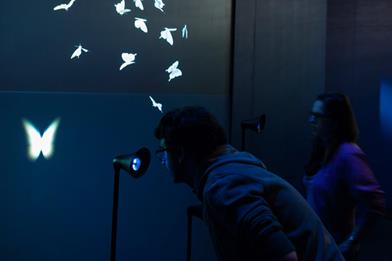
Figure 1. Audiences telling to information receivers (Image Source: https://image.manamana.net/)
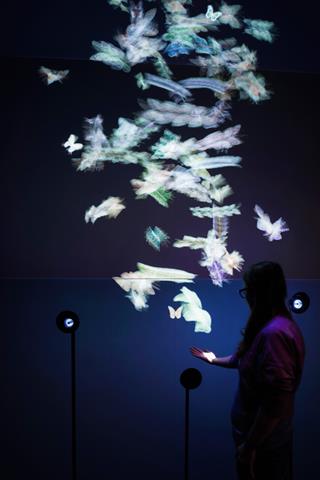
Figure 2. Butterfly flying free in the display screen (Image Source: https://image.manamana.net/)

Figure 3. Beautiful and mysterious image of butterfly (photo source: https://image.manamana.net/)
The work adopts an interactive narrative way, which allows the viewer to complete the narrative process of the work by telling his own wishes, and realize the final presentation of the work together with the authors. The viewers' wishes contain their current emotional demands. The work is more like a platform for the viewers to express their emotions, and to tell the troubles that cannot be expressed in the complicated life. The new media image art works attempt to complete the narrative experience by focusing on the physical and mental state and emotion of the reader and the author. Interactive narrative enables the viewer to truly enter into the story of the works, immerse himself in the dialogue with the works. The beautiful atmosphere created by the works makes the viewer feel warm, stimulates the viewer's gentle language expression, and constructs a virtuous circle for the whole installation work. When the narrative and emotion constitute the main melody of the work, the work will be connected with the viewer with beautiful or profound implications.
4.2.Interactive Narrative for the Emotional Connection Between Viewers
Interactive creation realizes the co-creation of the author and the viewer. In the process of creation, the viewer timely feeds back the impressions to the work to perfect and promote the narrative development of the work. Different types of interaction require different interactions. In the new media image art works, the viewer can not only interact with the work itself, but also communicate and connect with the viewer. This process is also a process in which the viewer can understand the work more openly and in a more meta way. The connection with others leads the viewer to pay attention to the work from a more novel perspective, thus reducing the sharp or general situation in the viewer's understanding of the work to a certain extent. Through the collision of the viewers' thinking, the significance of the work can be analyzed more deeply.
Taking the work < Space > as an example, < Space > is interpreted by its author Hansen as "breaking down social barriers". Hansen thinks that social intercourse is a strange network. When people move in a relatively fixed space, social intercourse will also become a non-human phenomenon. People's intercourse is established on the basis of close distance. Based on this awareness, Hansen defines the "mesh structure" as the final visual presentation of the work (figure 4). During the operation of the device, whenever one participant enters the interaction area, a circle will appear to track the viewer's movement trajectory. after waiting for multiple participants to enter the device together, a linear connection will be generated between the circles. the linear connection will continue to develop and eventually perfect to form a large "mesh structure" (figure 5). This "social network" is constantly changing depending on the participants' course of action. The operation process of < Space > enables viewers to clearly pay attention to the existence of social distance, and also enables participants to truly see that the relationship between themselves and the outside world and others is interlaced but interdependent. the composition and development of the network connection in the work reflects the fluidity and variability of social relationship. The "breaking social barriers" proposed in the work actually has two meanings. The first one is to make the viewer realize that he is in a social network visible to the naked eye through the interaction between the viewer and the work. As an individual, every small behavior affects the pattern change of the social network. Tell viewers that social distance is not difficult to break, and the connection between people does not need too much effort. The second level of intention is more direct. When viewers participate in the device, they have already broken down the social barriers. In the process of movement and transposition, viewers form natural social connections with other viewers' eyes, body and language communication. Such naturally occurring communication is more effective than directly imparting so-called social skills to viewers. It is also a unique chemical reaction between interactive narrative and new media works of art.
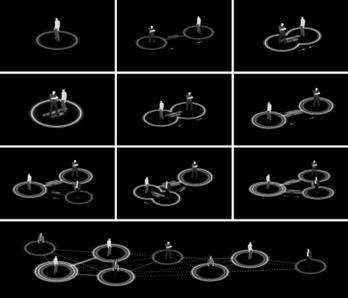
Figure 4. The network structure of the work (Source: https://hellohandson.com/work/space/).
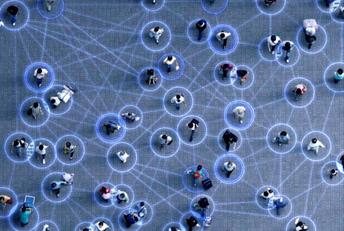
Figure 5. The resulting net-like junction (photo source: https://hellohandson.com/work/space/).
As the object of communication with new media works, the degree of audience reception and understanding of information will be affected by the way the works are expounded. When a new media installation of an artistic work enables interaction between the viewer and the viewer, the viewer's impression and understanding of the work can be deepened to a certain extent, because in addition to the visual or spiritual communication with the work, it also increases the emotional connection between the viewers [11]. The viewer and others are immersed in a story of the work, and the existence of the viewer is confirmed by each other. This also enables the viewer to have a firmer belief in the narrative space constructed by the work. At the same time, under the action of others, the viewer can think from the perspective of inertial thinking. This process is also a process in which the viewer interacts with the work with a more open and diversified attitude.
4.3.Interactive Narrative for the Viewer and the Emotional Connection Between Social Phenomena
In the process of creating new media image works of art, serious social topics are inevitably discussed, and artistic vocalization can often refine the issues and play an unexpected role in the discussion and solution of the issues. Through interactive narration, the new media image art works allow viewers to communicate and contact social topics intuitively. Through participation in story telling, the new media image art works deepen viewers' understanding of social issues and form reflections to urge viewers' own behavior [12].
The creation of the new media installation "The Spectator" raises the issues of users' personal privacy leakage and users' lack of attention to information security in the era of big data. The work makes a brand-new discussion on this issue through direct and powerful story telling techniques. The main body of the installation work is a cube with six "holes" (figure 6). The six holes are spy ports for the viewer to spy out the internal image of the cube. When the viewer approaches a certain spy port arbitrarily, the photosensitive sensor will trigger the projection device above the spy port, and an AI-generated "eye" visual image will appear above the viewer and watch the viewer (figure 7). At this time, the snooper (viewer) forms a relative relationship between snooping and being snooped with the whole device at the moment of snooping. The four walls in the cube will simultaneously display the viewer's picture from the third perspective. Then, the viewer who sees his own behavior will be instantly awakened to the awareness of "snooping". The Spectator puts forward that in the information age, people often hide themselves in groups and observe the world in a "snooping" way. On the one hand, they appeal to the society for the protection of personal privacy, but on the other hand, they are full of curiosity about other people's information and data. With the rapid development of science and technology, the excessive informatization seems to have blurred the connection between people and social reality. The interaction between the screen and multimedia causes some confusion in people's mood and spirit. Infinite images also tell the connection between people and reality time and time again. With the interactive narration, the viewer's consciousness is deepened with vivid visual effects while the story is expounded. Especially for some deep and serious social phenomena, when it is not possible to make an accurate right or wrong, only everyone can distinguish himself by his own feelings and judgments.
Art is an extension of human thinking concept, which records and conveys the development process of society. As a new art form in the digital age, new media image art always bears due social responsibility [13]. Under the application of interactive narration, viewers can have a dialogue with social phenomena by interacting with new media art works, which is similar to the dialogue with others. The process of connecting viewers with social phenomena is also the process of inspiring viewers to understand the content of works from different angles. The narration of new media works of art contains different emotional expressions, and different emotional expressions are also applicable to different social phenomena. Through artistic processing, viewers can make their own judgments on some social phenomena that are difficult to distinguish right from wrong through their own experience and understanding. When art can't directly solve the problem, triggering viewers' thinking is the first step to solve the problem.
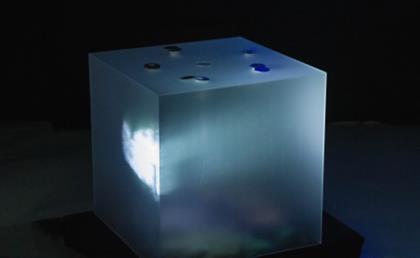
Figure 6. Device body (Image Source: https://image.manamana.net/).
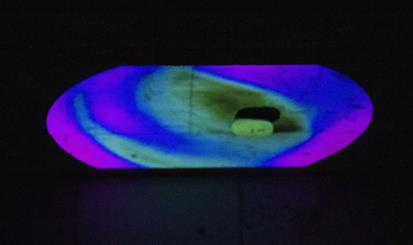
Figure 7. Visual image of "eye" above viewer (Image Source: https://image.manamana.net/
Video Link: https://www.manamana.net/video/detail?id=1816014#!zh).
On the whole, in the new media installation art, in order to complete a more complete narrative experience, the application of interactive narrative has begun to replace the traditional narrative activities without interaction. No matter for the viewer himself or the viewer and the outside world, interactive narration emphasizes exploring the expression of emotion through the viewer's own experience. The emotional expression under the narration is not only helpful for the artistic works to show their deep ideas, but also can deepen the viewer's self-understanding and reflection through emotional experience, and further improve the social responsibility of design and art.
5.Conclusion
Looking back on the changes of narrative methods in the development of art, from the imagination perception of paper-based words to the visual perception of the combination of audio-visual feelings, narrative has always built a virtual conceptual space for artistic works and continuously extended the possibility of viewers' experience. In the future, the narrative expression of artistic works will also turn to practice in more dimensions, and the emotional communication between people and art will be further released. In the analysis of this article, there are two general development threads. One is that interactive narration has realized the possibility of extending people's emotional expression to the perception of artistic works to a certain extent; Second, in the process of using interactive narration, the viewer, as the origin of emotional perception, can not only generate emotional value by accepting the narrator's story, but also connect with the world and others through his own participation in mixed reality, and transform emotional value into social value.
By analyzing the interactive narrative methods in the existing new media installation works of art, this paper discusses the positive role of interactive narrative as a narrative form of emotional perception in the development of new media art, and puts forward that attention should be paid to the expression of emotions in new media works of art in order to guide the viewer's positive state and lead the positive social development. The development of new media art will continue to combine narrative, emotional application, interaction and other elements in a diversified way. It is still worth further exploring to develop more inclusive and innovative new media art forms.
References
[1]. Brooks, P., (2002). Reading for the plot. Cambridge, Mass.: Harvard University Press, p.5.
[2]. Zoran, G., (1984). Towards a Theory of Space in Narrative. Poetics Today, 5(2), p.309.
[3]. Guo Z.C. (2022)Body interactive narrative: an experiential interpretation of narrative form in the intelligent era. News and communication review.
[4]. Herman, D., (2001). Narrative Theory and the Cognitive Sciences. Narrative Inquiry, 11(1), pp.1-34.
[5]. Tommy, Xu Y.Q.,(2021) Research on Information Design from the Perspective of Entity Interactive Narration. Decoration, (09):24-28.
[6]. Shi D.Q.,(2020) Gestalt design of large-scale and low-density new media space. Journal of Computer Aided Design and Graphics, 2020(7): 7.
[7]. Wang H, Liu S.R.,(2018) Immersion and Narration: Research on the Immersion Experience Design of Museum Culture under the New Media Imaging Technology. Art Hundred Schools, 34(4): 9.
[8]. Zhou C,Y.,(2021). Research on the evaluation of man-machine interaction and interaction experience of new media art works. Decoration, 2021(6): 2.
[9]. Gu Y,Q, Liu S.(2020) Form, dimension, and context: on the "space" reconstruction of immersion new media installation art. Decoration, 2020(7): 3.
[10]. Lim, C. K. (2021, July). An emotional tactile interaction design process. In International Conference on Human-Computer Interaction (pp. 384-395). Springer, Cham.
[11]. Riedl, M. O., & Bulitko, V. (2013). Interactive narrative: An intelligent systems approach. Ai Magazine, 34(1), 67-67.
[12]. Cummings, J. J., Tsay-Vogel, M., Cahill, T. J., & Zhang, L. (2021). Effects of immersive storytelling on affective, cognitive, and associative empathy: The mediating role of presence. new media & society.
[13]. Efrat, L., (2022).Historical APPistemology: The Mapping of the Expanded Field of Cultural Heritage AR Apps as a Creative Tool. [online] Journals.ub.uni-heidelberg.de. Available at: <https://journals.ub.uni-heidelberg.de/index.php/dah/article/view/63730> [Accessed 18 April 2022].
Cite this article
Bai,S. (2023). Interactive Narration: Immersive Emotional Expression in New Media Image Art. Communications in Humanities Research,2,383-393.
Data availability
The datasets used and/or analyzed during the current study will be available from the authors upon reasonable request.
Disclaimer/Publisher's Note
The statements, opinions and data contained in all publications are solely those of the individual author(s) and contributor(s) and not of EWA Publishing and/or the editor(s). EWA Publishing and/or the editor(s) disclaim responsibility for any injury to people or property resulting from any ideas, methods, instructions or products referred to in the content.
About volume
Volume title: Proceedings of the 3rd International Conference on Educational Innovation and Philosophical Inquiries (ICEIPI 2022), Part III
© 2024 by the author(s). Licensee EWA Publishing, Oxford, UK. This article is an open access article distributed under the terms and
conditions of the Creative Commons Attribution (CC BY) license. Authors who
publish this series agree to the following terms:
1. Authors retain copyright and grant the series right of first publication with the work simultaneously licensed under a Creative Commons
Attribution License that allows others to share the work with an acknowledgment of the work's authorship and initial publication in this
series.
2. Authors are able to enter into separate, additional contractual arrangements for the non-exclusive distribution of the series's published
version of the work (e.g., post it to an institutional repository or publish it in a book), with an acknowledgment of its initial
publication in this series.
3. Authors are permitted and encouraged to post their work online (e.g., in institutional repositories or on their website) prior to and
during the submission process, as it can lead to productive exchanges, as well as earlier and greater citation of published work (See
Open access policy for details).
References
[1]. Brooks, P., (2002). Reading for the plot. Cambridge, Mass.: Harvard University Press, p.5.
[2]. Zoran, G., (1984). Towards a Theory of Space in Narrative. Poetics Today, 5(2), p.309.
[3]. Guo Z.C. (2022)Body interactive narrative: an experiential interpretation of narrative form in the intelligent era. News and communication review.
[4]. Herman, D., (2001). Narrative Theory and the Cognitive Sciences. Narrative Inquiry, 11(1), pp.1-34.
[5]. Tommy, Xu Y.Q.,(2021) Research on Information Design from the Perspective of Entity Interactive Narration. Decoration, (09):24-28.
[6]. Shi D.Q.,(2020) Gestalt design of large-scale and low-density new media space. Journal of Computer Aided Design and Graphics, 2020(7): 7.
[7]. Wang H, Liu S.R.,(2018) Immersion and Narration: Research on the Immersion Experience Design of Museum Culture under the New Media Imaging Technology. Art Hundred Schools, 34(4): 9.
[8]. Zhou C,Y.,(2021). Research on the evaluation of man-machine interaction and interaction experience of new media art works. Decoration, 2021(6): 2.
[9]. Gu Y,Q, Liu S.(2020) Form, dimension, and context: on the "space" reconstruction of immersion new media installation art. Decoration, 2020(7): 3.
[10]. Lim, C. K. (2021, July). An emotional tactile interaction design process. In International Conference on Human-Computer Interaction (pp. 384-395). Springer, Cham.
[11]. Riedl, M. O., & Bulitko, V. (2013). Interactive narrative: An intelligent systems approach. Ai Magazine, 34(1), 67-67.
[12]. Cummings, J. J., Tsay-Vogel, M., Cahill, T. J., & Zhang, L. (2021). Effects of immersive storytelling on affective, cognitive, and associative empathy: The mediating role of presence. new media & society.
[13]. Efrat, L., (2022).Historical APPistemology: The Mapping of the Expanded Field of Cultural Heritage AR Apps as a Creative Tool. [online] Journals.ub.uni-heidelberg.de. Available at: <https://journals.ub.uni-heidelberg.de/index.php/dah/article/view/63730> [Accessed 18 April 2022].









